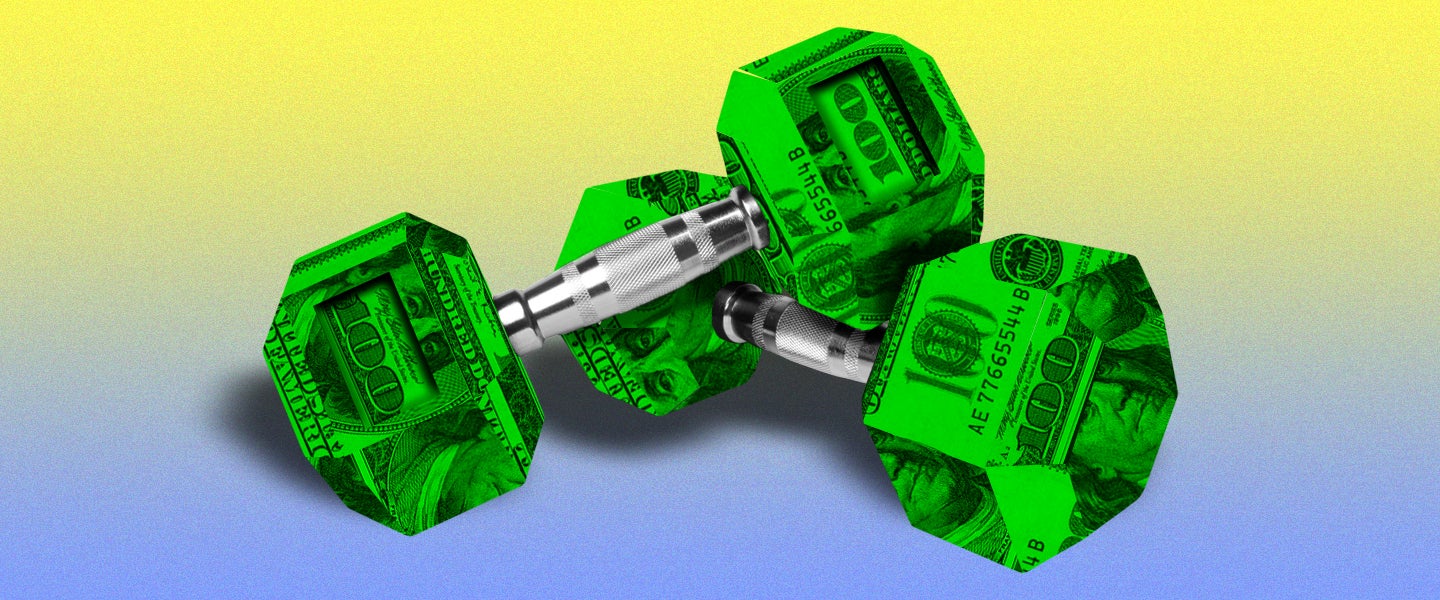Coronavirus has confined many of us to house arrest. And like so many others, have you actually tried to buy dumbbells in the past month? They’re harder to find than toilet paper! Quarantining has led to a run on fitness equipment, and people looking to buy this stuff for the first time may get sticker shock: Hundreds of dollars for a fancy, matching array of heavy things with handles that you pick up then set back down? What the fuck, man?
This dumbbell-economics enigma raises several other questions: Do you even need them all? What about those all-in-one contraptions? What’s the difference between an expensive dumbbell and a cheap one, anyway? Alongside Zach Pello, a personal fitness trainer in Carmel, Indiana, we’re going to do the, uh, heavy lifting of answering the pertinent questions.
Brah, seriously, a dumbbell set can cost $1,500 or more. Why?
Well, the biggest reason has to do with their very essence, their raison d’être: They’re effin’ heavy! Like lots of other things in this world, they’re made in China. That means they have to be shipped overseas to reach our country, and anything heavy is going to cost a lot to transport. Thus, a lot of the cost has to do with the freight.
The other fact is that dumbbells are made of dense metals: cheaper ones are cast iron, while more expensive ones use stainless steel, both of which are expensive materials.
Then there’s the market — well, the old, pre-coronavirus market. “It’s a niche market, so it’s expensive,” Pello says. “Yeah, they sell a lot in bulk to gyms, but in reality, the volume they sell is probably not that high.” So the laws of supply and demand come into play here: It’s a product with a small number of buyers that’s super durable. Dumbbells may not exactly last a lifetime, but it’s not like you’re buying an all-new set every year. They’re priced according to the market — at least until recently, when lots of people were suddenly locked out of their gyms and working on their curls for the girls at home now. The supply wasn’t ready to accommodate the sudden demand.
Why are some cheaper than others?
Do u even lift, bro? Just kidding — it’s mostly to do with the material and a bit to do with the design. Cast iron dumbbells are the cheapest (not counting those plastic ones with sand — “those are gonna have some trouble,” Pello says). Next are those round, stainless steel ones that look nice and shiny. There are also the rubber-coated hexagonal ones (although they have a strong odor that takes a while to wear off). The ones that are most expensive tend to have a urethane coating on them. Nice gyms generally splurge on those, and they’re more durable in the long run.
Then there are different kinds of handles. On cheaper models, the knurling (the wonderful word for that etched cross hatching that improves grip) might either be so slippery you have trouble holding on, or so sharp they’re better suited for shredding parmesan. Nicer sets supposedly have better knurling that’s just right. Tapered handles are said to be better on the tendons in your wrist and help to distribute pressure, but these are nice-to-haves, rather than necessities — a straight handle will likely work just fine. “I don’t feel like there’s gonna be a big difference,” Pello says of the different designs and materials overall.
Do I really need a full set?
Not at all! Pello recommends a lot of his clients just get three single dumbbells: a heavy, a medium and a lightweight one. (So for a man, perhaps a 50- to 60-pound one, a 30-pound one and a 15-pound one.) “There’s a lot of exercises that require light weight, lots that require medium and a lot that require heavy,” he says. You don’t even need pairs — you can do single-arm exercises.
“Three [weights] is a great starting point,” he adds. “They last awhile, it’s a great investment and you can slowly build into it — you don’t need to jump right in, unless you really want to. The average person doesn’t need an entire set of dumbbells.”
What about plate sets, or those Bowflex or Powerblock adjustable sets?
Pello says they all generally work great. Because of their shape, the adjustable kinds can be a little awkward for some exercises, or even finicky, he says, but they’re a great bang for your buck. They’re not cheap, but you do get a lot of weights for the price.
And do I need nice ones? Or can I get by with cheapo dumbbells?
Pello personally buys Amazon-brand dumbbells and kettlebells for his home, and says they’re actually pretty solid (pun not intended, presumably). “I’d look for the least expensive ones, then go one step up from that,” he says. “You can’t go wrong somewhere in the middle.”
Ah, kettlebells. Should I buy them too?
Kettlebells are great, but generally speaking it’s either/or. There are benefits to kettlebells that you can’t get with dumbbells, yet there’s also some awkwardness with them — pros and cons to each. Pello says most people will probably feel more comfortable with dumbbells, though people with experience are probably able to get a little more out of kettlebells. He likes them himself, but says that if he can’t coach someone through them, they’re likely to feel awkward using them.
Overall, then, they’re… sorta worth the high price, so long as you don’t go too nuts?
Sure — especially if you follow Pello’s advice and just get a few. You can do innumerable exercises with dumbbells, they’re super easy to stow away, they’re pretty much the most legit and least faddish fitness equipment imaginable, and they’ll probably last longer than you — unless you’re that guy at the gym who likes to grunt and groan and throw them around, in which case just stay at home, even when this is all over.

